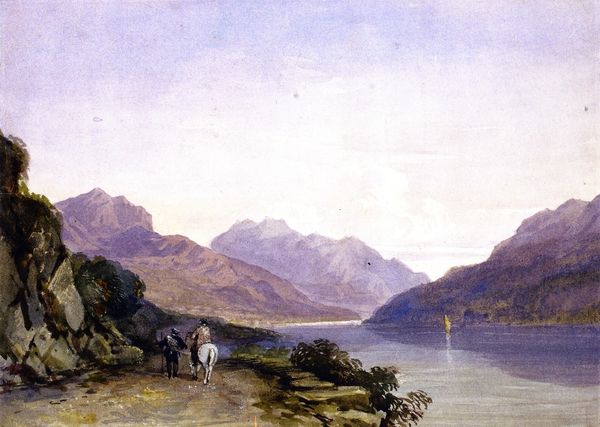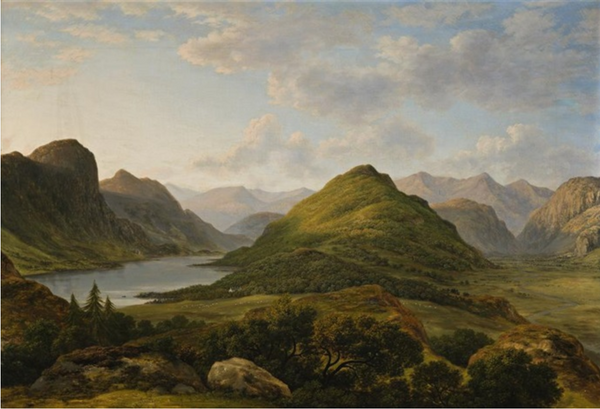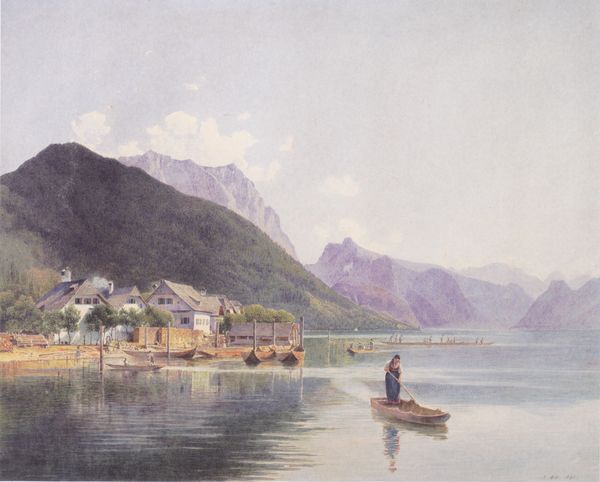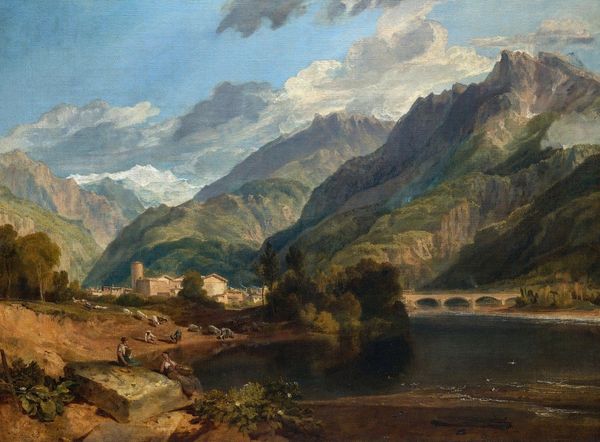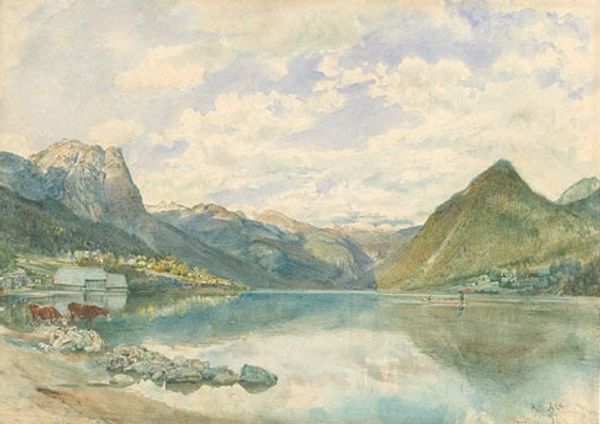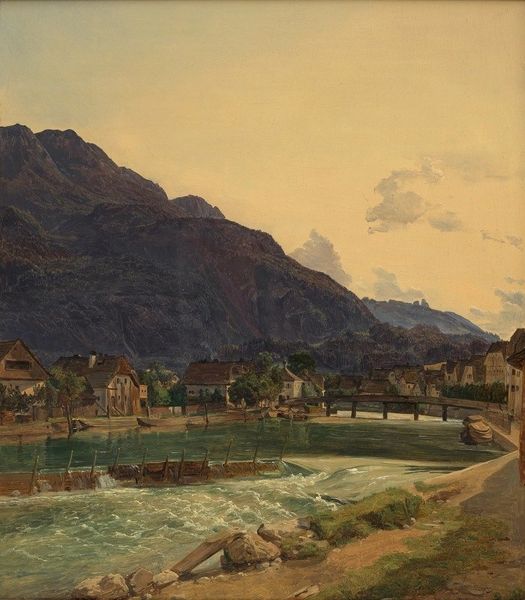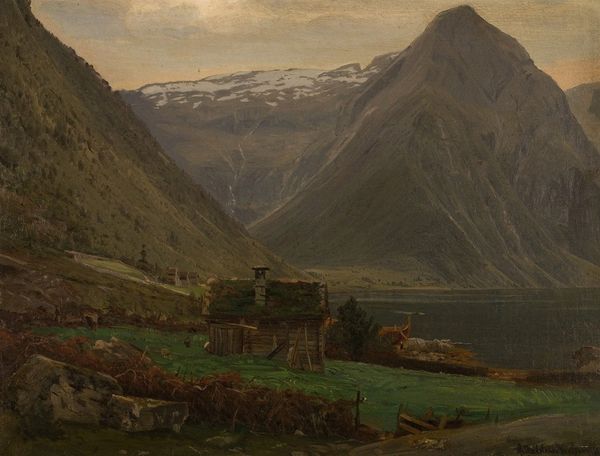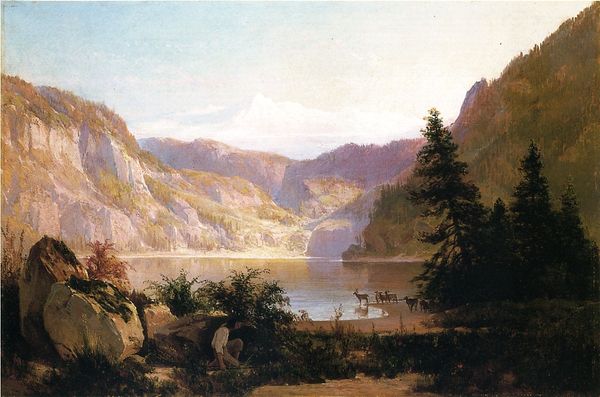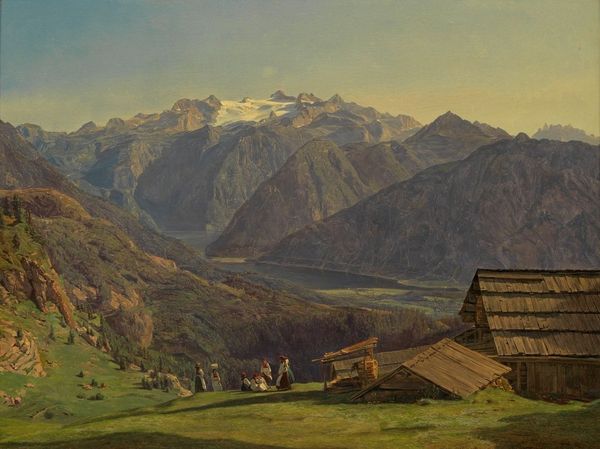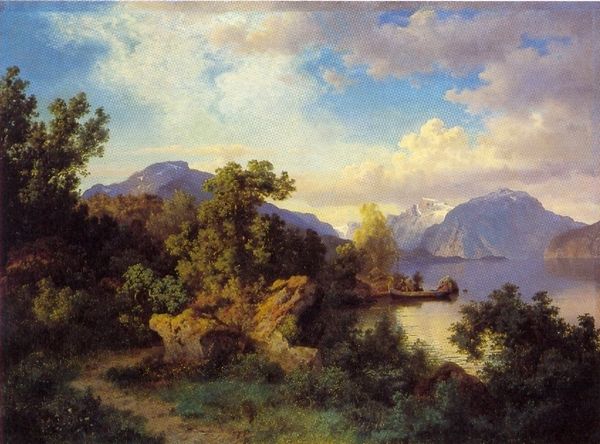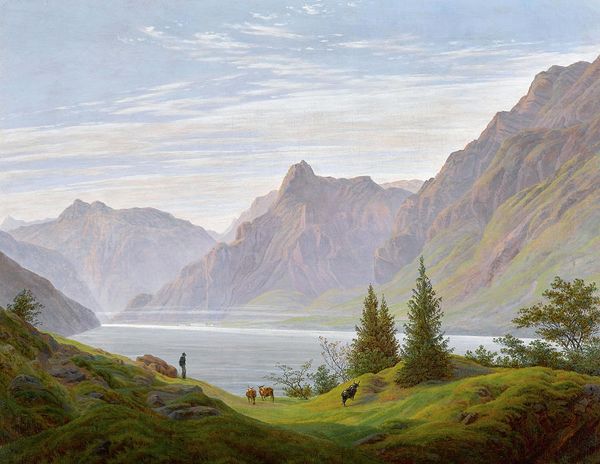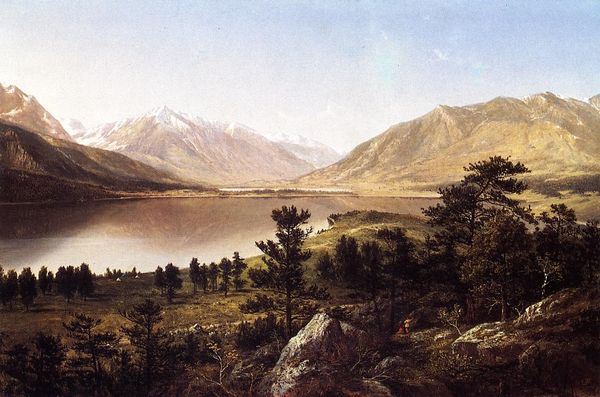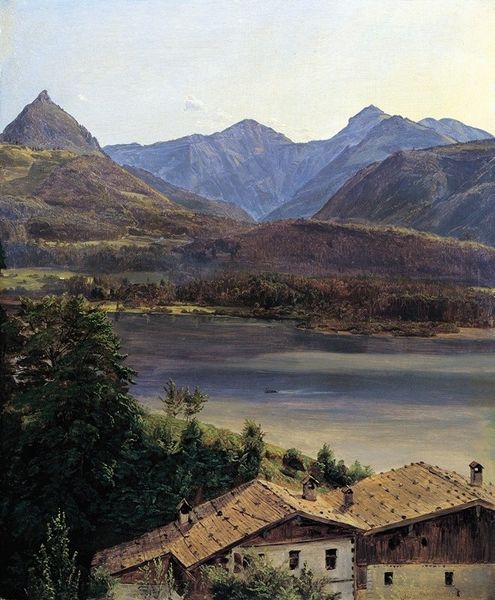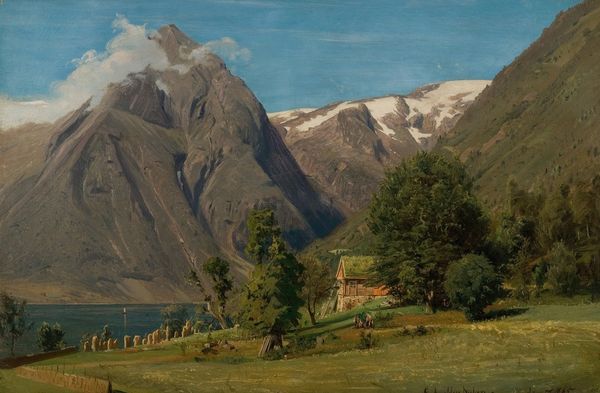
plein-air, watercolor
#
sky
#
lake
#
plein-air
#
landscape
#
oil painting
#
watercolor
#
romanticism
#
mountain
#
natural-landscape
#
nature
#
watercolor
#
realism
Copyright: Public domain
Curator: Ah, here we are. Take a look at Ferdinand Georg Waldmüller’s "Traunsee with Orth-castle", created around 1830. The crispness of the watercolor is really striking, isn’t it? Editor: Absolutely! I am immediately hit by the tranquility of it all, that silvery light blanketing the water...it's almost palpable, like I could step right in and feel the cool air. What's your take on its iconic feel? Curator: The castle itself is highly symbolic, isn’t it? It reflects stability, permanence—ideas very appealing to the Biedermeier sensibility of the time. It’s a potent visual anchor amid nature's grandeur. Notice how Waldmüller subtly uses the verticality of the castle tower against the horizontal stretch of the lake. Editor: True. But I think it's the way he juxtaposes it with the almost theatrical mountainscape—very Romantic, wouldn't you say?—that gives it that real power. A cozy symbol of domesticity against sublime nature. It feels almost like a stage set. I imagine figures emerging... Curator: Yes, but consider this: while the style flirts with Romanticism, Waldmüller’s close observation and accurate rendering of light are firmly rooted in Realism. He painstakingly captured the atmospheric conditions, influenced by plein-air painting, an increasing tendency that aimed to catch a glimpse of real experience. The mountain doesn't tower in a dramatic, awe-inspiring way like in, say, a Caspar David Friedrich. It’s much more...grounded. Editor: Fair enough, but even in Realism, there is that hint of nostalgia that runs deeply, maybe an invitation to recall our own idealized landscapes...The more I gaze, the more the artist’s vision and execution astounds me. Curator: Precisely! This artwork serves as a memory anchor, subtly binding us to past perceptions and idealized versions of 'Heimat', but also towards observational objectivity that, once assimilated, opens for personal expression. Editor: I’m so glad we took a moment to appreciate this one. It definitely sparks a longing for stillness, even in our hectic world, and makes me reflect about the intersection between the familiar and our feelings towards it. Curator: Yes, Waldmüller encourages that— a quiet invitation to meditate on the enduring links between the built world and nature. A fitting reflection for today, I'd say.
Comments
No comments
Be the first to comment and join the conversation on the ultimate creative platform.
